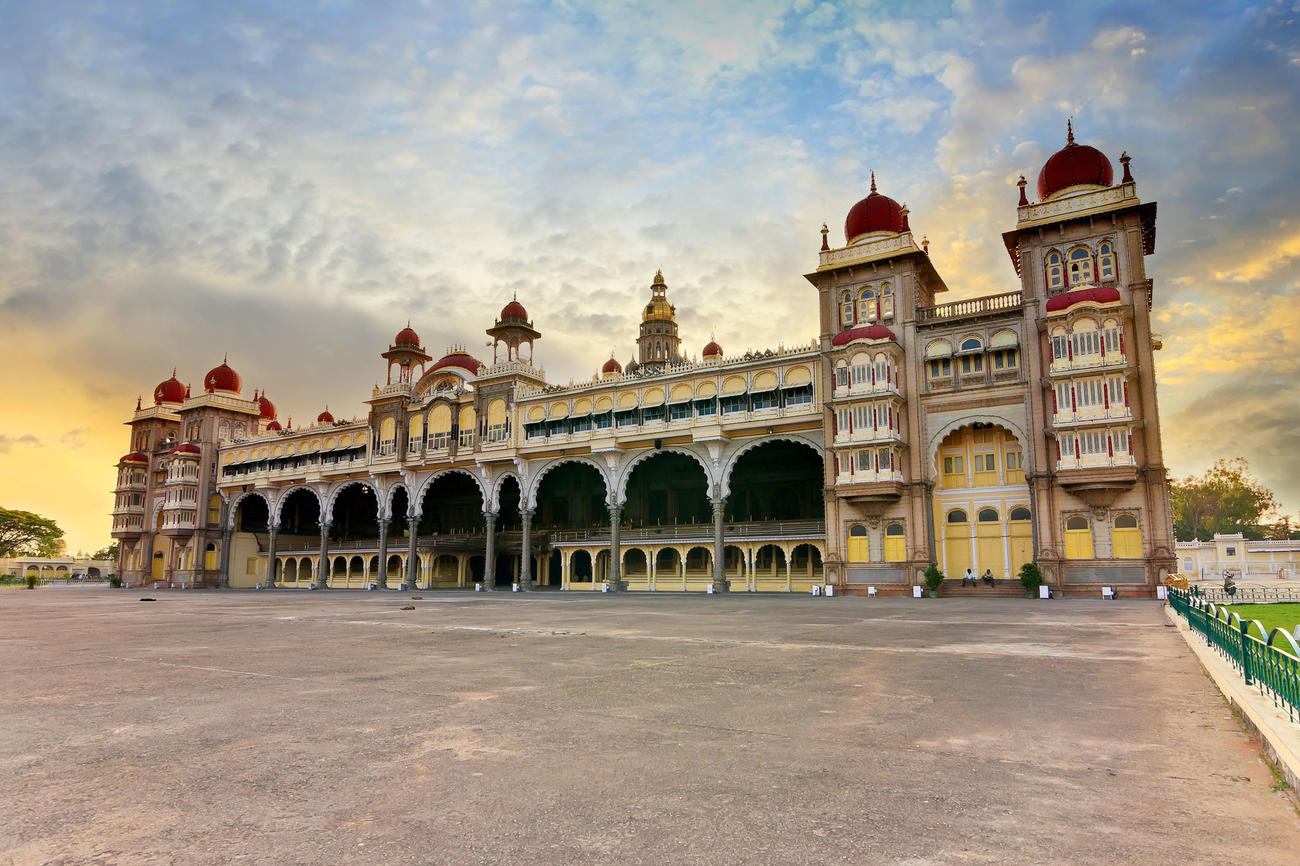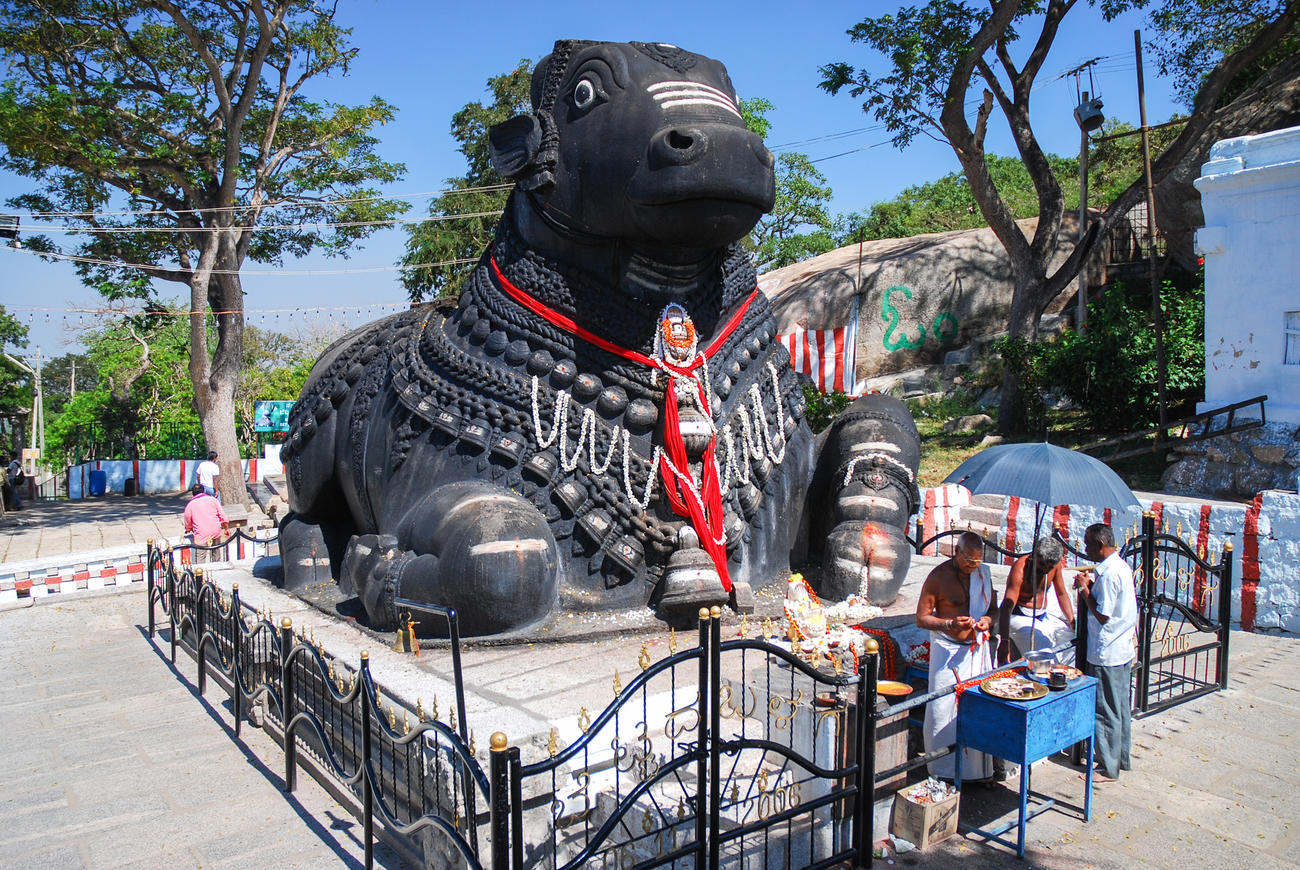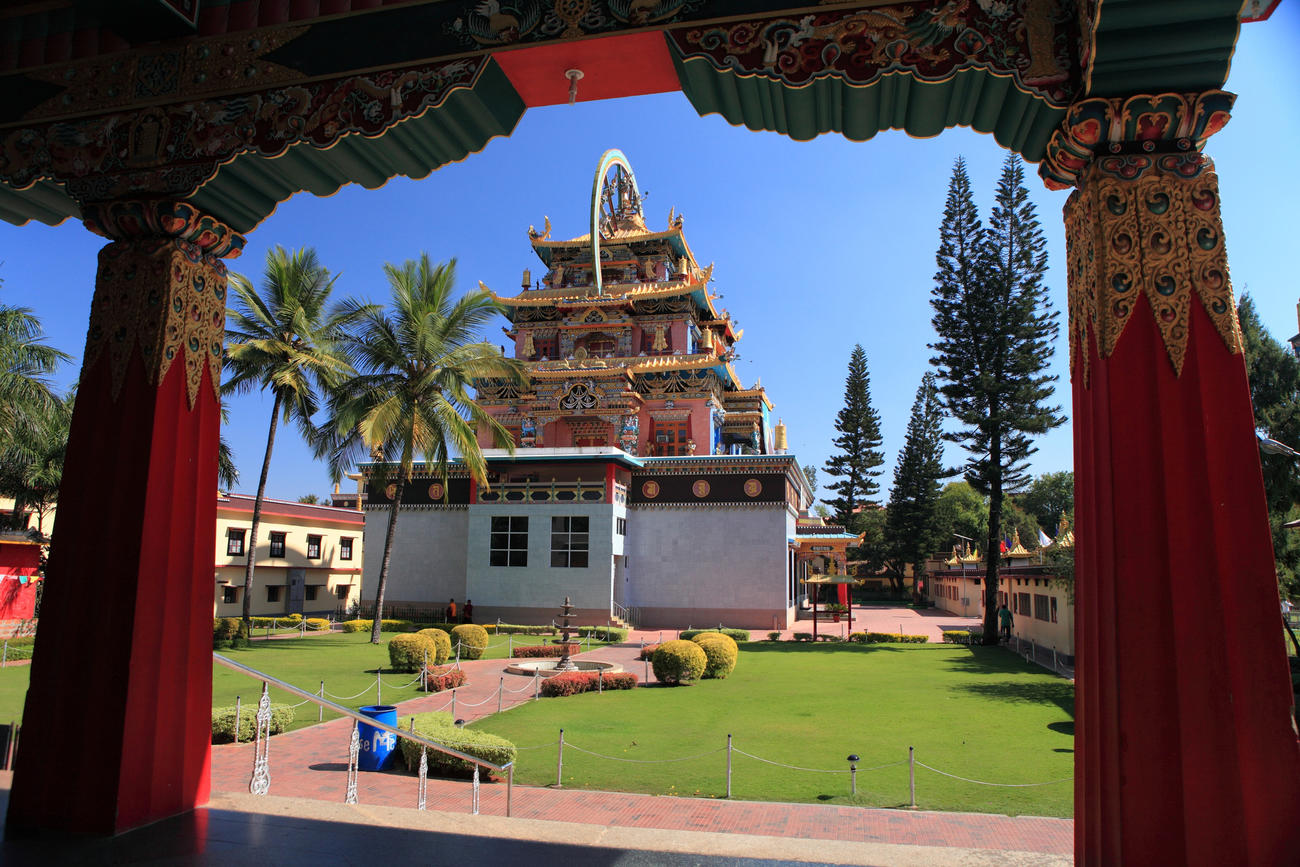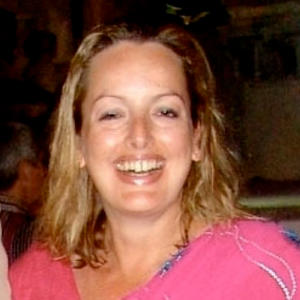There wasn't much time as we rushed to our rooms for a quick freshen up before heading out to the palace and then on to dinner. Earlier in the day we had arrived in Mysore after a rather delicious lunch at the hotel where they had a "chaat" counter. Chaat is the food you see served up on every street corner, particularly in Old Delhi. A typical dish is delicious puri filled with cubed potatoes, smothered in curd and tamarind and then sprinkled with the fine wormy looking things you find in Bombay Mix at home. Another popular dish is vada – small ringed doughnuts, made of a deep fried lentil batter, but served with a fresh coconut and chilli chutney. Indian chutneys are made with fresh ingredients, unlike western chutneys which are boiled with vinegar to preserve them.

Having enjoyed our lunch we headed out to view the palace, a rather over the top concoction of Indo-Saracenic architecture designed by a "Britisher", Mr Henry Irwin, at the princely sum of INR4.5million and completed in 1912. No expense was spared, especially on the impressive marriage hall with its lofty painted iron pillars smelted in Glasgow, fantastic stained glass domed ceiling and chandlers to envy. On the walls were wonderful murals depicting scenes of Dasara, Mysore's most famous and spectacular festival in October. The next room had the most exquisite rose wood doors delicately inlaid in ivory, depicting scenes of Lord Krishna.

Suitably impressed we headed up to Chamundi Hill and then walked down to the vast Nandi Bull, Lord Shiva's vehicle. Nandi was decked out in garlands of marigolds and jasmine, having been given a good scrub, all in preparation for the next day. It turns out that the four Mondays after Dasara are very auspicious and there would a big ceremony going on the following evening in honour of Nandi.
We arrived at the palace in the evening with a few minutes to spare. A carnival-like atmosphere greeted us as we wandered into the palace grounds, with everyone waiting for the same thing. All faces turned towards the darkened palace. Bang on 7pm... ping or should I say bling as 98,000 bulbs were switched on and the palace, its temples, walls and gates were all lit up. Don't expect this every night though as it only happens on Sunday evenings and every night throughout the ten days of Dasara.

The next day we headed to Coorg to spend a couple of nights in an organic plantation, stopping off en route to visit a new friend of mine – Ani, who is an America Buddhist nun at Bylakuppe. Bylakuppe was given to the Tibetan refugees after China took over. They carved farmland and monasteries out of the jungle and settled down to make a life for themselves. Ani (which means nun), had ordained as a nun after taking early retirement and was asked to come out to a particular monastery to teach the young monks who range from 4 or 5 to 18. Her tasks include teaching English as well as cleanliness; ensuring that the boys shower each day, wash their clothes, wash their hands after using the bathroom and before meals, as well as dealing with the ringworm which they now seem to be on top of.
It was incredibly fascinating to get a western perspective on life in a monastery and being able to ask questions which one maybe wouldn't have asked a local or would have perhaps got lost in translation. We also visited the incense factory and the workshop where the Buddhas are made by beating copper sheets and crafting them into Buddhas before they are painted.
After saying goodbye to Ani we stopped off for a delicious lunch of momos (Tibetan dumplings), before visiting a painting school where they produce thangkas. From there we went to the famous Golden Temple to see the three enormous golden buddhas, as well as get a glimpse of the monks at prayer, chanting along to music. All in all it was a fascinating insight and thoroughly enjoyed by all.
